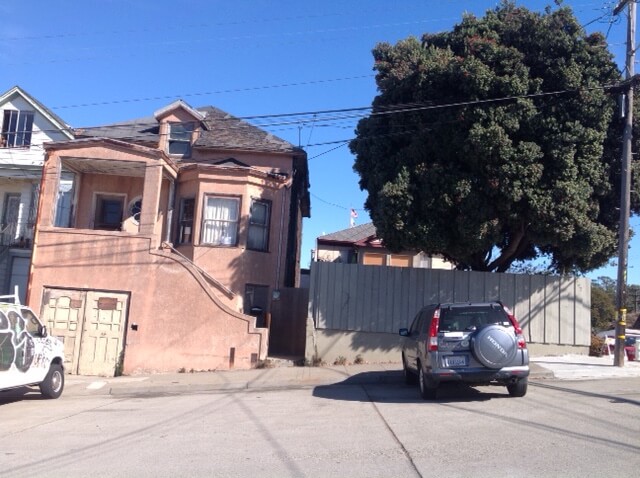With average square footage home prices hovering at $1,100 in Potrero Hill, property owners have a rich incentive to max-out expansions, extensions, and construction of new structures. High demand and scarce supply of housing has led to the steady development of what some longtime Hill residents consider to be Monster Homes. And while City ordinances don’t guarantee that existing views from a given home or flat will be protected, there’s significant wiggle room in municipal guidelines to enable clever architects to design buildings that take advantage of every inch of buildable space.
Built in 1910, the single-family home at 891 Carolina Street shows clear signs of having been neglected for many years. Bill Canihan, Jr., the property’s owner, sought to tear-down the structure in the early-2000s, and replace it with a large four-story home with sweeping views, designed by Walters Architecture. That project was rejected by the San Francisco Planning Department due to its proposed scale. More than a decade later, in 2014, new plans were drafted by John Lum Architecture to develop a roughly 4,000 square feet, four-story, building.
The current home rests atop a hill on a residential stretch of Carolina Street, near 22nd. Many of the surrounding houses are one or two-stories, with 2,000 square feet of space. Some Hill residents feel that new developments should conform in size and design to the rest of the neighborhood. And, according to the Planning Department’s Residential Design Guidelines, published in 2003, “Proposed projects must be responsive to the overall neighborhood context.” The Guidelines are intended to help preserve community characteristics and contribute to the City’s aesthetic appeal and quality of life.
According to Planning Code Section 311(c)(1), “The construction of new residential buildings and alteration of existing residential buildings in R districts shall be consistent with the design polices and guidelines of the General Plan and with the “Residential Design Guidelines” as adopted and periodically amended for specific areas or conditions by the City Planning Com-mission.” The Guidelines cover a number of design elements, including expectations associated with the development and proportion of corner buildings.
Although the Planning Code allows for heights of up to 40 feet, given that 891 Carolina Street is on a hilltop, some neighbors feel that a four-story building would loom large over adjacent edifices, and erode the block’s character. “The design itself is not bad, but for this location, it’s out of scale both in footprint and in height,” said Kris Gardner, a longtime resident of the block. “I’m concerned about the size and scope in relation to the rest of the neighborhood. The proposed building is extremely large for the area. Four-stories is a departure from keeping in character with the neighborhood. We have to ask ourselves if this is an appropriate way to build.”
The project is in the final review process with the Planning Department. In mid-March John Lum Architecture will present what it hopes will be the last set of plans. Residents close to the property can expect a meeting notice via mail.
Gardner believes that the Planning Department’s treatment of the project will be prece-dent-setting for the neighborhood. “There needs to be more collaboration between developers and residents. People need to be heard,” she said.
This is the first of a two-part series.


